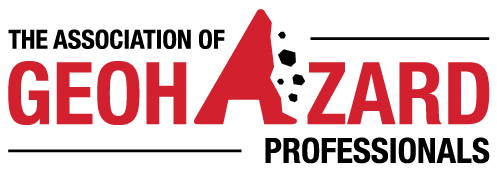Rope Access Committee
The AGHP's Rope Access Committee is comprised of the following members:
- Marc Fish (fishm@wsdot.wa.gov) - Chair
- Ernest Rankhododo (ernest.rankhododo@icloud.com) - Secretary
- William Gates (gates@mcmjac.com)
- Michael Mulhern (Mulher@wsdot.wa.gov)
- Nicolas Villard (nvillard@nge.fr)
- Christian Mynhardt (christian@hoffgeotechnik.com)
- Andrew Chouinard (Andrew.Chouinard@parks.ny.gov)
This committee aims to develop a standard of best practice that ensures safe and appropriate procedures for the geohazard industry. Standard training for recreational climbing, search and rescue, arborists, security, avalanche control, and man-made structures is very task-specific. The difference between working on slopes in the geohazard and geotechnical industry and working in these other applications is significant. Each requires different skills, techniques, and equipment that do not meet the needs of the geohazard and geotechnical industry.
The Rope Access Committee manages the AGHP's Annual Rope Access Safety Recognition Program which recognizes companies that develop and implement safe rope access work procedures, provide education and training to their personnel, and commit to enhancing the safety culture within their organizations.
Rope Access Assessment
An integral part of any project on slopes or on the ground is to properly assess the site conditions and hazards or potential hazards that exist. While there are many site safety programs and procedures for working on the ground and on structures, few are available for working on slopes. A Rope Access Assessment (RAA) can provide a critical first step to slope safety. RAA forms help ensure that comprehensive and consistent information about slopes is collected. By implementing the use of RAAs as a best practice, management and staff may have comprehensive site data in place. This information is key to understanding the needed staff and equipment for each site. The AGHP has developed a Rope Access Assessment form that can be utilized or modified to suit you or your company’s needs.
Training and Slope Access Manuals
Slope access is a significant component of the geohazard profession. In many projects, working on steep terrain is an integral part of the job. Accessing a slope in steep, mountainous terrain or on structures with vertical exposures requires the requisite skills to perform the work safely. Choosing the right technique requires experience and the appropriate training. Associations that have developed the relevant training and which have trained AGHP members include:
The geohazard profession covers a variety of construction projects and designs, many of which require the use of ropes to perform the work. Many AGHP members use the following manuals and guidebooks as a resource for this type of rope work:
**The information appearing on this site is for general informational purposes only and is not intended to provide endorsements by the AGHP. The AGHP does not control or guarantee the accuracy, relevance, timeliness, or completeness of information on a linked website. This information is subject to change, based on new research and development, and does not necessarily express the views of the AGHP.
